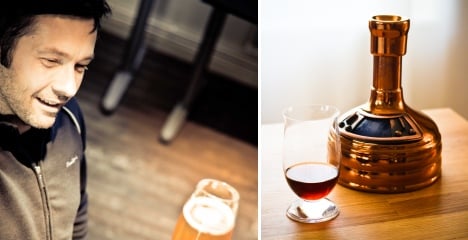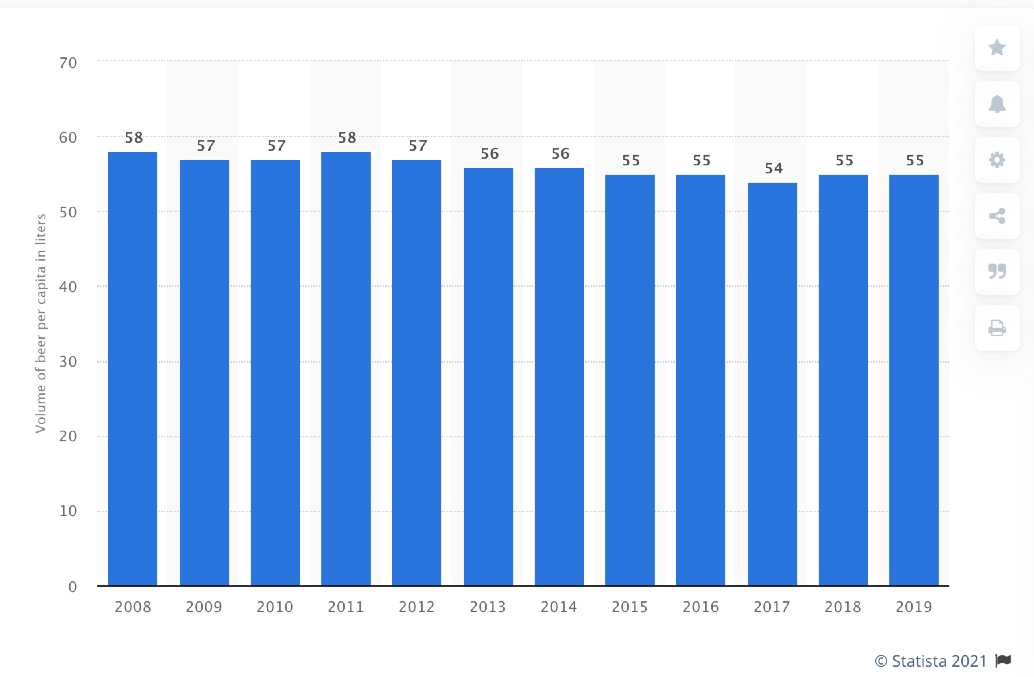I want you, if you would, to join me for a quick session of word association to discover whether your brain has been ‘wine-washed’.
If I say the word ‘wine’ what images, memories and associations are conjured up? Chances are we’ve never met before but I’m guessing dinner parties with friends, fine-dine restaurants, cheese, vineyards and chateaux in France are among the thoughts dancing across your brain’s hippocampus right now.
Ok, let’s switch the word to beer. What happens then?
Again we’re all very different but I’ll bet that images of ferries to Finland, saunas, pizzas, football matches, belching, farting, fighting and general bad behaviour are lighting up your neural pathways like fireworks right now.
It’s a fact that for many of us beer is considered the working class member of the drinks family. If wine drives around in a Bentley beer sits behind the wheel of a clapped-out transit van.
Beer’s bad image and wine’s elevated status is the result of a combination of several historical, cultural and social factors. But the gap between beer and wine has widened more rapidly than ever with the advent of mass marketing, with the wine industry doing a textbook job of associating your thoughts about wine with elegance, fashion, food, social status and health.
The beer industry on the other hand has done a spectacular job of dismantling its once gleaming reputation as a drink that built empires and one that graced the dinner tables of royalty.
Profit-hungry modern-day beer conglomerates have opted to spend vast chunks of their promotional budgets below the belt rather than above the line, with beer having been represented by everything from frogs to men dressed as bears using more sexual innuendoes than you’ll hear from a dressing room full of rugby players. Sometimes the sex sell is obvious, other times it creeps in, like this Carlsberg ad currently airing on Swedish TV.
Over the coming months here at The Local I’m going to attempt and press the reset button on many of the things you might consider beer to be.
It’s not my aim to make beer out to be more wine-like – after all one of the things we all love about beer is that it can be enjoyed without any pomp or ceremony – but I will be trying to showcase beers that take the fight to wine in terms of enjoyment, flavour, complexity and as a partner to food.
To illustrate this I’m kicking this column off with an extreme beer that really does challenge the concept of what beer is and how far we can stretch the boundaries of what can be done with water, yeast, hops and malted barley.
Samuel Adams Utopias was once the world’s most expensive beer (it’s now ranked 4th). Around 70 bottles of the 2009 vintage were released at the Systembolaget this month for the ‘can-that-be-right’ asking price of 1,150 kronor a bottle.
That’s a lot of money for a beer, putting it on a pricing par with a vintage Borolo or a rare single malt whisky. So is it really worth it and more importantly what does a beer that costs more than a return flight to London really taste like?
Utopias comes packaged in an ornate copper-plated replica of a brewing kettle. The beer itself is a whopping 27 percent ABV and brewed using quality malts and the ‘old world’ noble hops varieties of Hallertau Mittelfruh, Spalt and Tettnager.
The 2009 vintage I’m trying here contains a blend of batches, some having been aged up to 16 years in the barrel room at the brewery in a variety of woods. A portion of the beer has also been aged in hand-selected, single-use bourbon. Another batch has spent time in Portuguese muscatel finishing casks, as well as sherry, brandy and cognac casks.
The beer pours a shimmering fiery copper. At this level of alcohol there’s absolutely no carbonation in the beer and hence no head, giving it the appearance of a fine cognac.
The similarities with cognac don’t end there either, with giddy aromas of rum-soaked raisins, vanilla, oak and maple syrup. It is sweet and sticky in the mouth, with dense flavours of toffee, honey and dried fruits. Despite its strength it finishes with a satisfying warmth rather than running ‘hot’ like other high strength drinks sometimes can.
All in all very elegant and complex stuff and light-years away from the industrial fizz many of us consider beer to be.
Which is why every now and again I like a beer like Utopias to come along, because it reminds us that beer is every bit at home being gulped ice-cold straight from a bottle while flipping burgers on the BBQ as it is being sipped from crystal glasses at the end of a gourmet meal.
Darren Packman started writing about beer in the UK in the mid-90s. Now based in Umeå in northern Sweden, Darren now writes about the beer scene in Sweden from the inside out on his “decidedly un-lagom beer blog” BeerSweden.se.




 Please whitelist us to continue reading.
Please whitelist us to continue reading.
Member comments